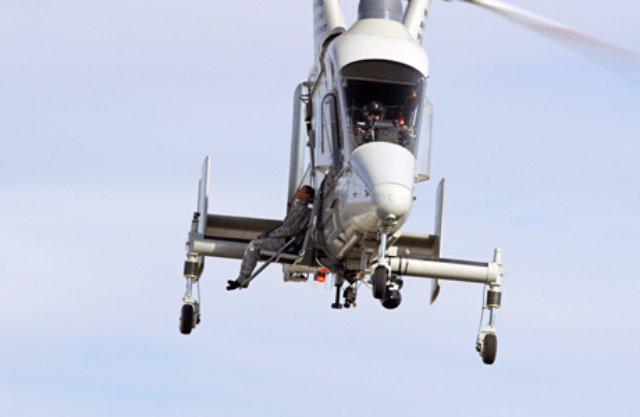 The US Marine Corps’ portion of the future vertical lift programme will be an optionally manned platform, the service’s deputy commandant for aviation says.While many have forecasted unmanned aircraft as the future of aviation, Lt Gen Jon “Dog” Davis believes the next generation of medium-lift, long-range rotorcraft should still have a pilot in the cockpit for some missions.
The US Marine Corps’ portion of the future vertical lift programme will be an optionally manned platform, the service’s deputy commandant for aviation says.While many have forecasted unmanned aircraft as the future of aviation, Lt Gen Jon “Dog” Davis believes the next generation of medium-lift, long-range rotorcraft should still have a pilot in the cockpit for some missions.
“That’s what we definitely want, why wouldn’t you want that?” Davis told reporters following a speech at the American Enterprise Institute in Washington today. “Especially for a high reliability airplane, we view that airplane as a manned platform.”
Much like the US Defense Department’s F-35 Joint Strike Fighter programme, the FVL programme is a joint effort led by the US Army to create a common helicopter across the US armed forces. The next-generation aircraft could be fielded by the 2030s and would recapitalise several helicopters including the Bell OH-58 Kiowa Warrior, Boeing CH-47 Chinook and Lockheed Martin C-130 transport aircraft. For the Marines, the rotorcraft could offer a cheaper version of the MV-22 Osprey for a medium assault mission.
The Defense Department entered into co-operative research agreements with four industry teams, including Boeing-Sikorsky, Bell, AVX and Karem for a demonstration phase. Bell’s V-280 Valor and Sikorsky’s SB-1 Defiant are expected to fly their prototypes, the only two for the programme, by late 2017, FlightGlobal previously reported. Bell or Sikorsky should be able to put forth an unmanned version of the V-280 and SB-1, since both helicopters offer fly-by-wire control systems, Davis said.
Whether the helicopter is prosecuting a strike mission or carrying valuable cargo could determine how many pilots are necessary, he said. Davis questioned whether two pilots were needed in the aircraft at all times, noting that Lockheed Martin’s single-seat F-35 completes strike missions. But the helicopter could also require at least one pilot while operating in a GPS or information denied environment where controls may fail, he added.
An unmanned aircraft could also open the door to a successor to the K-MAX, Lockheed Martin and Kaman Aerospace’s single-seat, optionally piloted helicopter which the Marines deployed in Afghanistan from 2011 to 2014. Two K-MAX helicopters are stationed at Marine Corps Air Station Yuma in Arizona and the service is studying the option for that platform, Davis said. Still, Davis must make sure the requirements process guides the Marine Corps to an unmanned aircraft like the K-MAX.
“If we have a logistics helicopter requirement we’re looking at K-MAX would be one of the players out there,” Davis says. “It’s a hot line, it’s a good airplane, so we’re very interested in that airplane.”
Source: Flightglobal
